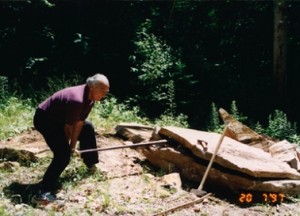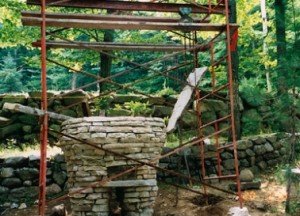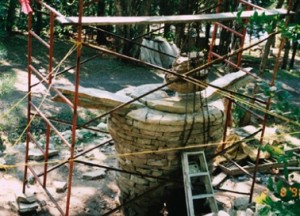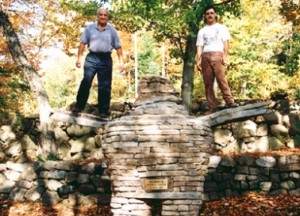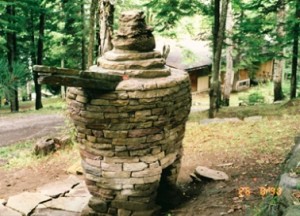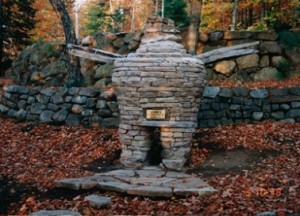1998 – 2000
They can be found scattered across the frozen land and can be spotted from miles away. Seasoned travelers can use the Inukshuiit as navigational aids.
A natural evolution from moving and fitting to splitting, cutting and shaping stones resulted in massive sculptures which are adding another dimension to the utopia Dr. Harry Rosen created as he landscaped his way up the mountain from the lakefront.
Rosen’s Inukshuk was inspired by the Inuit sculpture erected in front of the McCord Museum on Sherbrooke St. West in Montreal.
The Rosen sculpture is 9 feet tall and weighs over 10 tons. Each of the approximately 400 stones used has been individually carved with chisel and mallet to provide the sculpture with its final form. Stones were split employing techniques used by ancient cultures. The layers of stones are superimposed one upon the other by using traditional stone masonry techniques, without the use of power equipment.
The sculpture is gravity retained. The bulky body is balanced on two narrow tapering legs and the arms extend four feet beyond the body. These are directed up toward the sky and forward, to give the figure an embracing, welcoming appearance.
The head consists of a single volcanic stone weighing approximately 1,000 pounds. Fortunately, in its natural state the stone possessed some features of a face. The weight of the head holds the cantilever arms in place. Each arm can support the weight of a grown man without unseating or fracturing. It can also withstand a heavy snow load. The structure is gravity retained. Howerer, mortar was added from within to prevent water from entering thereby eliminating the danger of ice damage in the winter.

